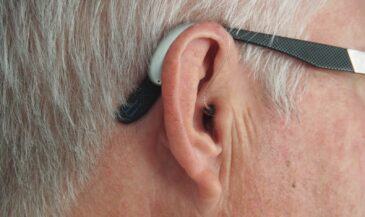By Dr. Christopher Kent
Health care in the United States currently consumes about one in every six dollars spent , and will consume an estimated one in every five dollars by the year 2015. It is projected that by the end of the next decade, the government will be paying about half of the nation’s medical costs. A report from the Centers for Medicare and Medicaid Services estimated that both government and private spending for health care will average $12,320 per person in 2015, almost double the 2005 figure of $6,683. The nation’s health care bill could total more than $4 trillion in 10 years. (US Health Care Bill by 2015: $4 Trillion. abcnews.com 2/22/06). Despite this, medical mistakes and iatrogenic illnesses are a leading cause of death in the US. [1] The US ranks 37th in overall health care performance according to the World Health Organization.
In my 33 years as a chiropractor, I have seen the profession face many difficulties. Our profession has survived these challenges for two reasons: 1) the powerful, positive effect of chiropractic care on human health; and 2) our commitment to those we serve.
The Chiropractic Leadership Alliance (CLA) is proud to have supported a landmark study where chiropractors collaborating with researchers at the University of Lund found that chiropractic care could influence basic physiological processes affecting oxidative stress and DNA repair. The study examined serum thiols in patients under shortterm and longterm chiropractic care. Serum thiols are primary antioxidants, and serve as a measure of human health status. The test provides a surrogate estimate of DNA repair enzyme activity, which has been shown to correlate with lifespan and aging.
Comparing serum thiol levels in nearly 50 patients receiving short or longterm chiropractic care with controls, researchers found:
- Independent of age, sex or taking nutritional supplements, longterm chiropractic care of two or more years reestablished a normal physiological state in patients.
- Patients receiving chiropractic care showed higher mean serum thiol levels, compared to patients with active disease, and produced some values that were higher than normal wellness values.
Simply stated, as we live life, we are subjected to physical, biochemical, and psychological stress. Our ability to repair damaged DNA is an important factor in health and longevity. Oxidative stress is now a broadly accepted theory of how we age and develop disease. Oxidative stress results in DNA damage, and inhibits DNA repair. In short, we now have evidence that chiropractic adjustments affect the chemistry of biological processes on a cellular level. [2]
Another important study was conducted by Dr. Ron Rupert and his team at Parker College. The study surveyed 311 chiropractic patients, aged 65 years and older, who had received chiropractic care for five years or longer.
- Despite similar health status, chiropractic patients receiving “maintenance care” for five years or longer, when compared with US citizens of the same age, spent only 31% of the national average for health care services.
- The chiropractic patients also experienced 50% fewer medical provider visits than their comparable peers. [3]
Can you imagine the potential economic impact of cutting medical provider visits by 50%?
As chiropractors, we hold an important key to solving the nation’s health care crisis. However, the health benefits and cost savings that can change the health care landscape were only seen in patients who were under longterm care.
If your patients quit when their pain disappears, or their benefits run out, they will not experience the full potential of chiropractic care. This places an awesome responsibility on your shoulders, that of effectively communicating the need for care and objectively demonstrating improved function after the symptoms have disappeared.
References
1. Null G, Dean C, Feldman, M, Rasio, D, Smith D: “Death by Medicine.” Life Extension. March, 2004. www.lef.org/magazine/mag2004/mar2004_awsi_death_01.htm
2. Blanks RHI, Schuster TL, Dobson M: “A retrospective assessment of Network care using a survey of selfreported health, wellness and quality of life.” Journal of Vertebral Subluxation Research 1997;1(4):15. http://www.jvsr.com
3. Rupert RL, Manello D, Sandefur R: “Maintenance care: health promotion services administered to US chiropractic patients aged 65 or older, Part II.” Journal of Manipulative and Physiological Therapeutics 2000;23(1):10.






























































































































































